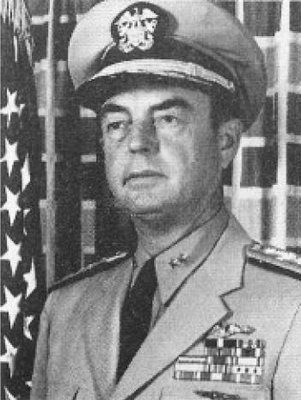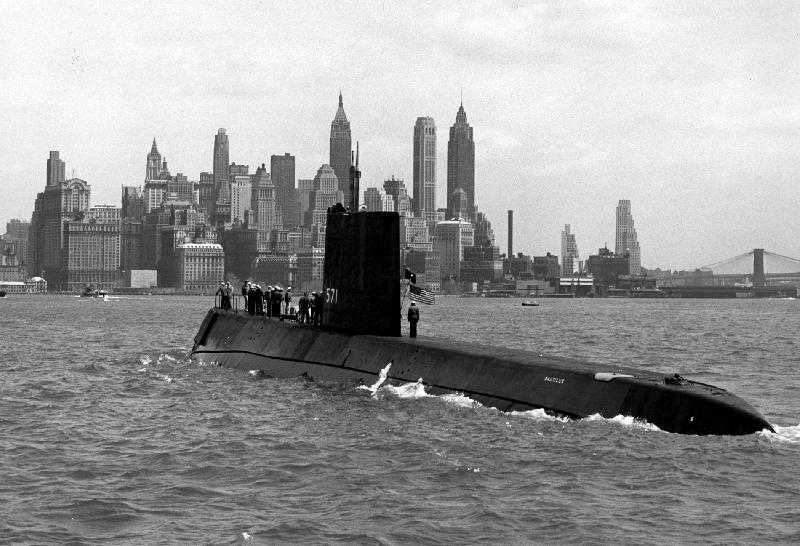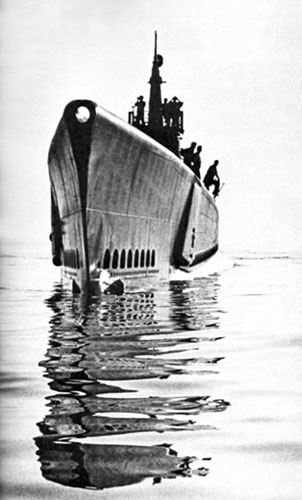06 January 2010
Pulling the Trigger

(Director of Naval Intelligence RADM Fritz Harlfinger)
When Admiral Rex served his nation, there were three Navies. The whole thing is enough to make your head hurt, and it is a good thing that the taxpayers don’t think much about it much. It is not unusual; after all, there were at least three Air Forces (bombers, fighters and trash haulers) and a dozen specialized Armies.
In all the cases, though, the specialties of specific missions drove insularity and promotion, and high degrees of loyalty within the tribes that made up the larger Departments.
There are four Navies at the moment, now that the SEALS have taken on a special prominence due to mission in the wars overseas that would have been unthinkable in Rex’s day. In the interest our both of our sanities, we will keep this short and sweet.
The three Navy’s of 1970 were composed of Surface Line (the Deck Officers who run the ships), Aviators (who arguably transformed the art of naval warfare with the associated aircraft carrier) and the Bubbleheads in the submarine force.
The ladder of career progression, imposed again after the great flood of volunteers and draftees had been disgorged from the rolls after the conclusion of WW II, mandated the block-checking and hop-scotch assignments to produce the perfect officer to command “in type,” be that a cruiser, an Air Wing or a submarine squadron.
From there came the draconian winnowing process to Flag, in which the tribes ensured that their equities were preserved, along with those of the Navy as a whole.
So far, there is nothing particularly unique about this example of a proud and tradition-bound organization. It had strict written and unwritten codes of conduct, and a glorious heritage to preserve.
The Navy had a special problem, though, and that was the fact that the Bubbleheads had not only found a national mission of covert reconnaissance against the Soviet Union, but were “underway on nuclear power.”
There is possibly not enough time in the world to adequately describe the impact of ADM Hyman Rickover and his small, powerful and reliable nuclear reactors. A man of astonishing capability and ego, he is known as the Father of the Nuclear Navy, and his shadow lingers long across this tale, and the careers of all who came after him.

(USS Nautilus Approaches New York)
In July 1951, Congress authorized the construction of a nuclear-powered submarine powered by the Westinghouse S2W nuclear reactor. The President’s wife, Maimie Eisenhower, was the sponsor, and the Nautilus (SSN-571) went down into the Thames River under the command of Eugene Wilkinson in 1954.
The impact is so profound on so many levels that I will leave those to a longer appreciation. The practical effect was that ADM Rickover was on the verge of creating not only a new tribe in the Navy, but a new service altogether. His method of selection and training made the new nuclear warriors a breed apart, and henceforth, and the submarine force went increasingly to an all-nuclear composition, there were two sorts of submariners: those who had served with distinction in the days of diesel, and those who had been indoctrinated into the holy temple of the atom.
That left a lot of very competent officers with excellent warfare skills a little adrift. No longer relevant to the increasingly high-tech Fleet, the old diesel boat mafia continued to serve at increasingly more responsible levels of the Navy, and places had to be found to accommodate them. Intelligence was close enough, and actually related to their existing experience, whether they knew a great deal about the larger field or not.
Here is the case in point:
Future Director of Naval Intelligence (August 1968 – July 1971) Frederick J. "Fritz" Harlfinger II (USNA Class of 1935), made his bones in the Japanese war as commander of USS Trigger. He took her on her ninth war patrol in April of 1944, and stayed in command for the tenth and eleventh patrols in the Western Pacific.
Trigger was a Gato-class Fleet Boat, laid down at Mare Island eight months before Pearl Harbor, and she fought her way through the whole of the Pacific conflict. There is something about the Silent Service of the submarine force that is aligned closely with the art of intelligence. By nature stealthy, the subs are ideal collectors of intelligence, and natural choices to apply deadly force when needed. Fritz (sometimes known as “Frog”) took over a fighting unit that had the sort of pedigree immortalized by deck-plate poet and Motor Machinist Mate First Class Constantine Guinness in his 1945 doggeral epic:
The Trigger Maru

(USS Trigger SS-237)
I'm the galloping ghost of the Japanese coast.
You don't hear of me and my crew
But just ask any man off the coast of Japan.
If he knows of the Trigger Maru.
I look sleek and slender alongside my tender.
With others like me at my side,
But we'll tell you a story of battle and glory,
As enemy waters we ride….
I've been stuck on a rock, felt the depth charge's shock,
Been north to a place called Attu,
and I've sunk me two freighters atop the equator
Hot work, but the sea was cold blue.
I've cruised close inshore and carried the war
to the Empire Island Honsh?,
While they wire Yokahama I could see Fujiyama,
So I stayed, to admire the view….
There is much more to the poem, just as there were hundreds of days shut up in the steel tube filled me men and high explosives and the stink of diesel fuel. But in the new Navy, reactors were what powered the sleek black submarines, and the leadership of the Service had the whiff of cordite and the corruption of brown water in their nostrils.
That is where we come around to Rex, and his elevation to flag officer, and the wreckage that needed to be cleaned up once the diesel boat admirals were gone.
More on that tormorrow, when we dip our toes in 1971.
Copyright 2010 Vic Socotra
www.vicsocotra.com
Subscribe to the RSS feed!